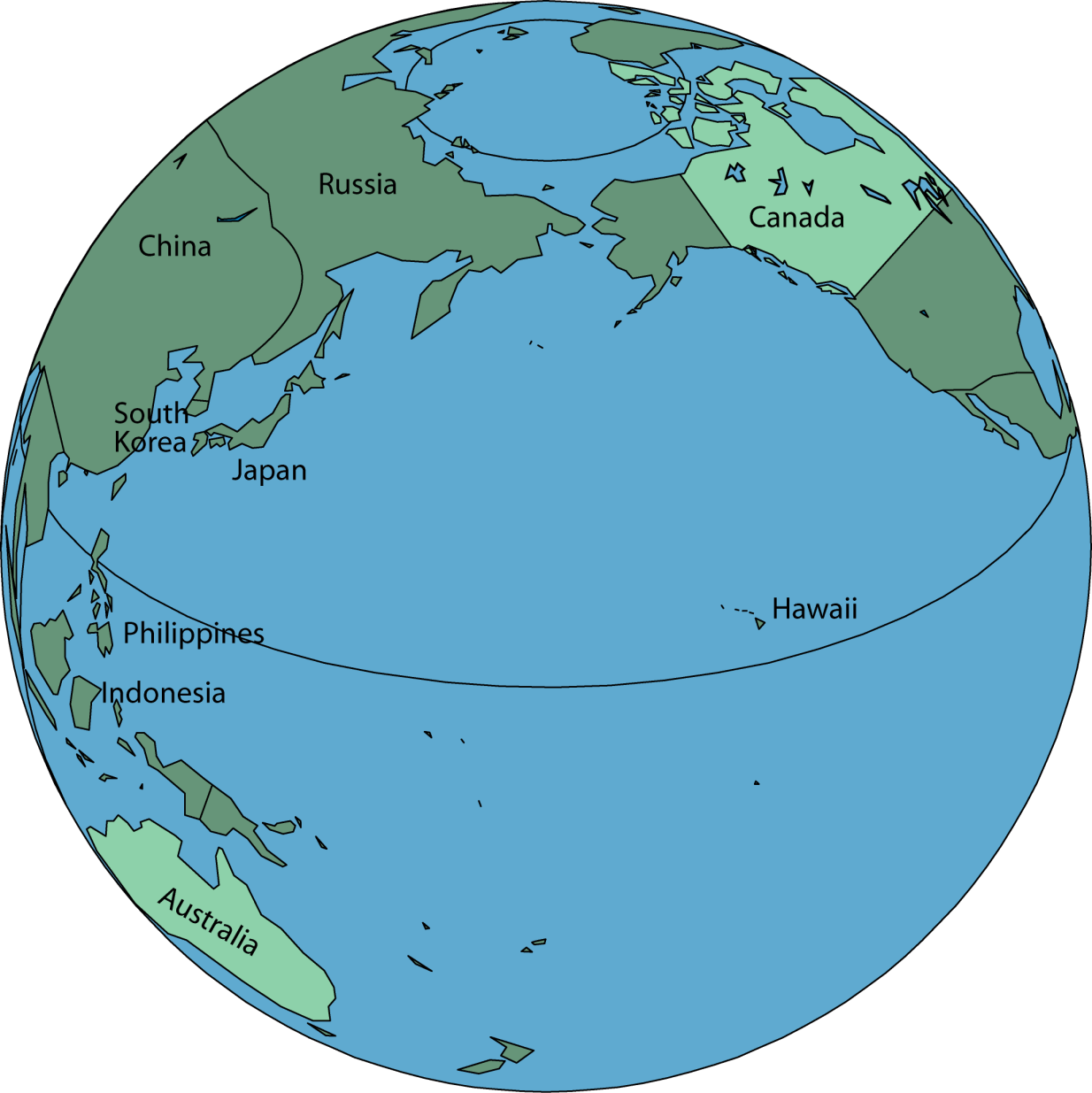Australia and Canada, I have argued elsewhere, are Strategic Cousins with more in common than most people realise. The Eurocentric Mercator projection leaves the impression that Canada is far removed from Asia. But in reality it is as close to Northeast Asia as is Australia (see map below). Yet Canada has been strangely missing in Australian discussions about the Asian Century White Paper and on recent deliberations on how to define the Indo-Pacific (PDF).
Part of the reason is that the conservative government of Stephen Harper has long focused more on economic ties with the United States and security ties across the Atlantic through NATO. But that has been changing and the momentum has been growing in recent months for Canada to undertake its own pivot to Asia.
One sign emerged with the Canadian Council of Chief Executives which hosted a ‘Canada in the Pacific Century’ conference in September this year. The conference brought together leading lights from Canadian business, government, academia, and other key groups to discuss Asia’s rise and the implications for Canada. What emerged was a stark realisation that Canada’s future, like that of many other countries, has become increasingly tied to developments across the Pacific Ocean.
As a result, the Harper Government has come to realise that Canada needs to develop a larger Asian profile. A flurry of recent activity has come to be referred to as ‘Panda diplomacy’. Canada’s Foreign Minister, John Baird, recently pointed out the need for Canada to diversify its markets. China is now Canada’s second largest trade partner after the United States. Baird points out that Harper has visited China, Thailand and Japan recently, while he has visited Burma/Myanmar. Some are seeing this as possibly being a watershed moment for Canada. These visits have focussed mostly on trade.
For Canada’s western-most province, British Columbia, Asia has always loomed large. Trans Pacific trade dominates and much of the population there is from Asia. British Columbia may well be the trend setter for Canada as the pivot there gathers momentum. Canada’s Policy Options magazine for September focused exclusively on the pivot to Asia as well. A wide range of commentators observed that momentum seems to be building for Canada to work towards being more closely integrated into the Asia-Pacific.
But much of this is a catch-up game, with some accusing Canada of having been caught napping. After all, Canada has no free trade agreements with Asia and is not in the East Asia Summit, although it has been a dialogue partner with ASEAN for 35 years. Canada is not a party to the Trans Pacific Partnership negotiations but is interested in joining. In effect, Canada is pushing its values and interests in a manner not unlike Australia. FM Baird sees that the tilt to Asia does not mean a tilt away from the United States. To Canada, as for Australia, it is not a zero-sum game of choosing one over the other.
Interestingly, the focus on Asia has been seen by some observers as being linked to the fact that the Obama administration cancelled the oil pipeline from Alberta to south Texas. Harper appeared to be deliberately sending a message to the United States that Alberta resources would be sold globally if the US decided to play politics on issues that affect Canada.
In the Canadian armed forces there’s plenty of discussion about engaging with Asia. But most recognise that the ‘pivot’ is led by trade, with security being an afterthought once it was realised that they went hand in hand. Canada is tentatively reaching out for military ties westwards beyond PACOM in Hawaii, but military ties with NATO and the United States remain the priority.
Despite many similarities, Australia and Canada seem to have each other in their blind spots. Australia’s Asian Century White Paper, mentions Canada only by way of comparison in areas like migration and participation in international fora, and Australia barely rates a mention in Canada’s.
Stephen Harper, who once said that he modelled himself on Australia’s own model conservative, John Howard, has hardly felt inclined to reach out to the Gillard-led ALP government in Canberra. One wonders what might have happened to bilateral Australian-Canadian relations if the Liberal leader, Michael Ignatieff, had won office at the last federal Canadian elections. As Canada looks more towards Asia, it will be interesting to see what Australia and Canada can learn from each other along the way.
(Thanks to Brendan Dwyer for some pointers and links.)
John Blaxland is a senior fellow at the Strategic and Defence Studies Centre at the Australian National University.


